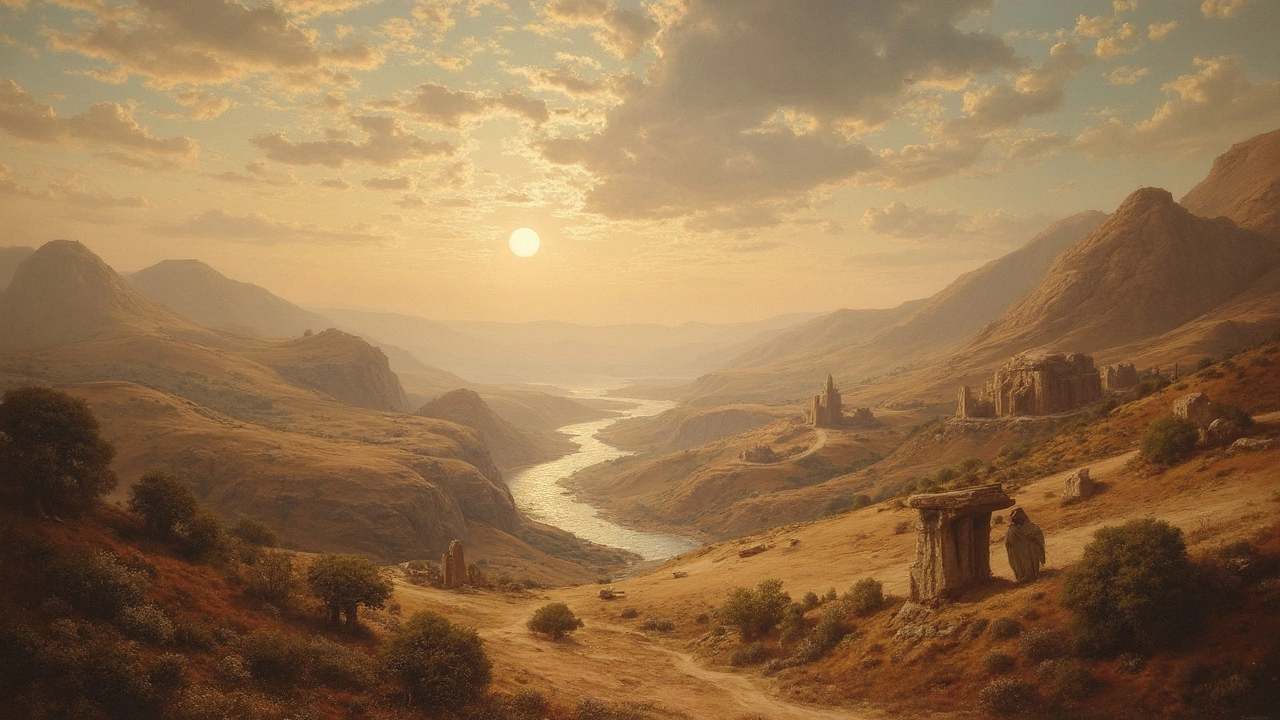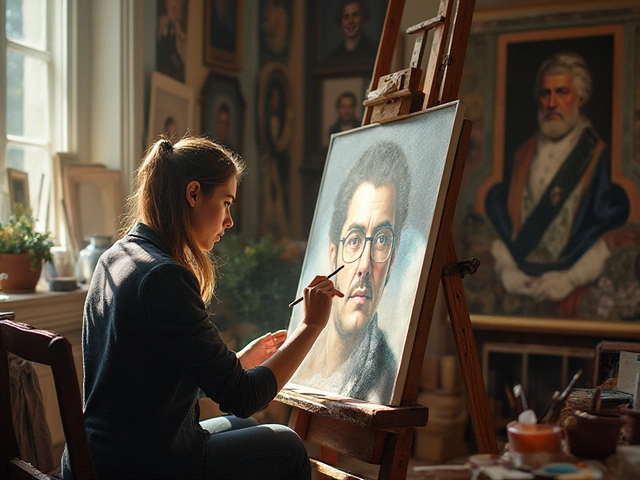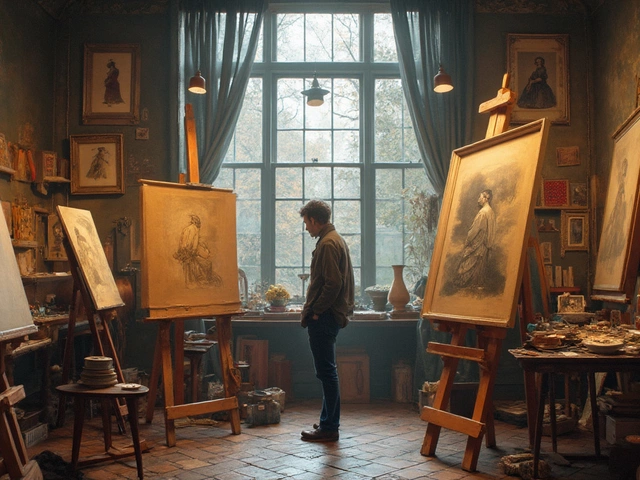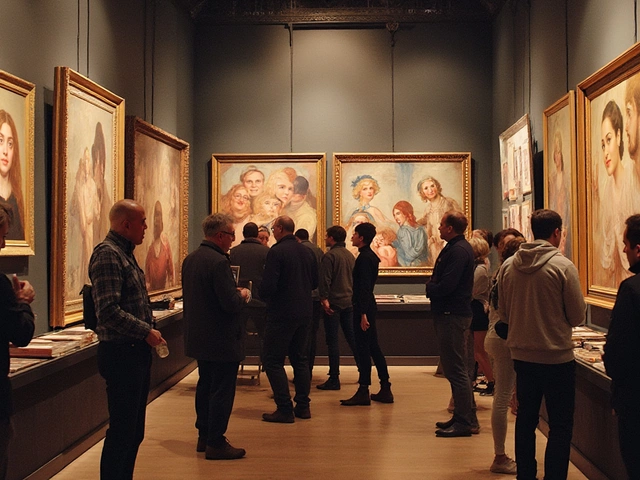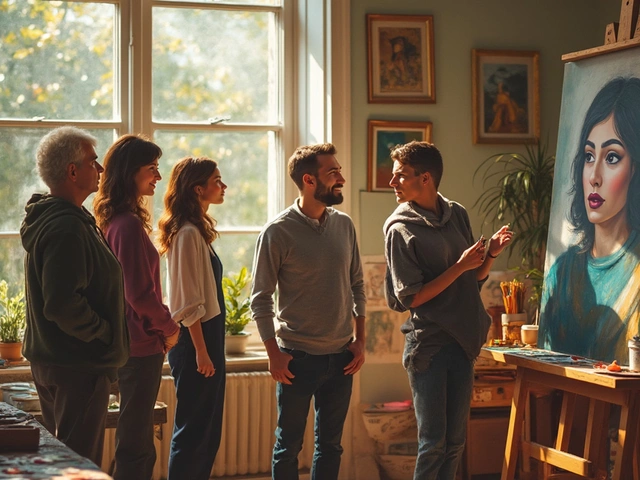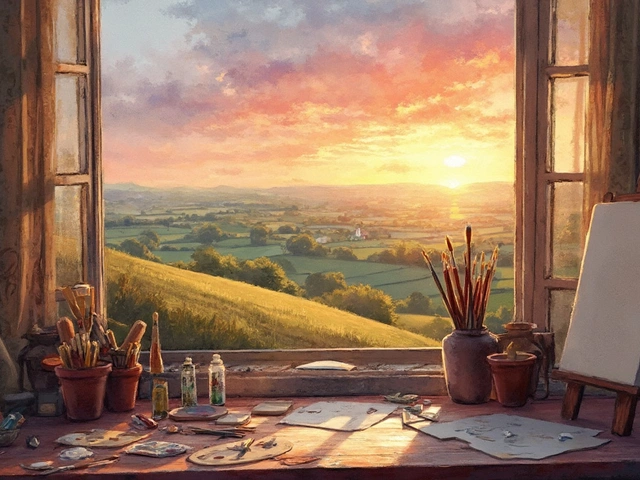Okay, let's talk about something really old and really cool: the oldest landscape painting ever discovered. We're diving into art that goes way, way back in time—long before Whiskers was even a thing. Imagine a time when people didn't have cameras or Instagram to capture scenery. Crazy, right? Instead, they poured their creativity onto walls and canvases.
This ancient landscape painting isn't just old; it's like the grandparent of all landscape art. Found in Catal Huyuk, a Neolithic site in modern-day Turkey, this remarkable piece dates back to around 7000 BCE. Picture a bustling community painting not only what they saw but also what they felt about the land around them. It wasn't just about pretty views; it was about storytelling, identity, and maybe even a bit of bragging about where they lived.
- Discovering an Ancient Masterpiece
- Historical Context and Significance
- Unique Characteristics of the Painting
- The Impact on Later Art Movements
- Preservation and Modern Influence
Discovering an Ancient Masterpiece
Imagine stumbling upon something from thousands of years ago. That's exactly what happened when archaeologists pulled back the layers of time at Catal Huyuk in Turkey. We're talking about the oldest known landscape painting. This place was buzzing with people around 7000 BCE, and the artwork they left is unlike anything we had seen before.
Catal Huyuk was like an ancient urban center, filled with mud-brick houses and mural-covered walls. During excavation in the 1960s, researchers unearthed a stunning wall painting that seemed to depict a volcano erupting over a village. This artwork is a mix of red, black, and white, capturing not just a view, but a story, perhaps even a significant event for the people living there.
The whole discovery was a bit like finding a time capsule buried in the dirt. Archaeologists can't stress enough how mind-blowing it is that people were already creating what we now call landscape art thousands of years before van Gogh swirled his first starry night.
Even though the paints and techniques were different, this ancient painting served a similar purpose to modern art: depicting the world around them. This artwork opens a window into how our ancestors perceived and interacted with their environment—which was more complex and meaningful than you might think.
The ancient art revealed in Catal Huyuk isn't just fascinating because it's old; it's about understanding how culture and art began to take shape. It's these glimpses into history that help us piece together the narrative of human development, and Catal Huyuk's mural is a masterpiece of storytelling.
Historical Context and Significance
So, let's set the scene: we're talking about art from a time even before cities really took off. The oldest landscape painting we're diving into was found in Catal Huyuk, which is considered one of the first true towns in human history. This place was buzzing around 7000 BCE, way before any organized urban centers even popped up.
Now, why is this painting a big deal? For starters, it's the earliest example we have of humans depicting their surroundings just for the sheer expression of it. Unlike many ancient artworks that focused on people or spiritual stuff, this landscape piece shows the environment itself was worth capturing. This shift marked a new way of thinking about art. It hints at how people were starting to see themselves as part of a larger world, not just isolated tribes or communities.
Back then, artists didn't call it an art revolution, but that's exactly what it was. By painting landscapes, they started expanding their artistic horizons and laid the groundwork for future art movements. Think about how landscapes today, in all their varieties and interpretations, owe a nod to this ancient artwork.
And speaking of impact, imagine the influence this had on the folks back then. It was probably like looking at a cool new gadget for the first time. This encouraged storytelling and social bonding, as people could share and reflect on their surroundings.
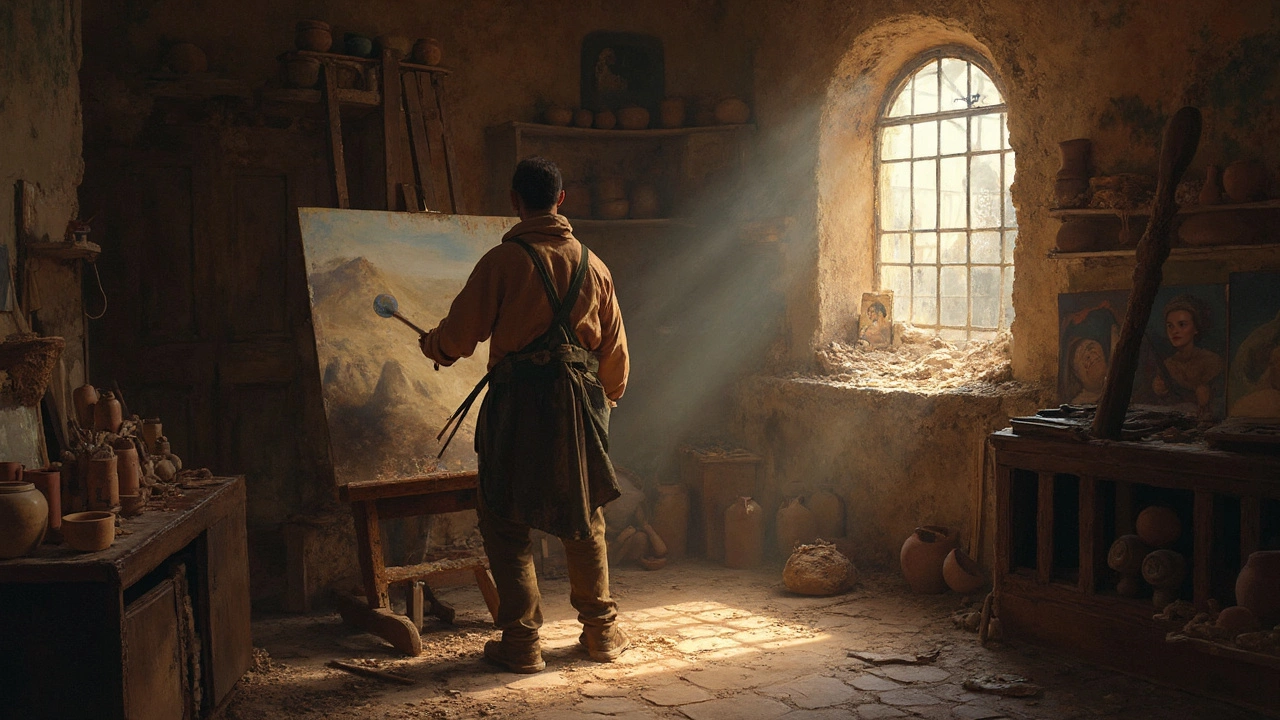
Unique Characteristics of the Painting
So what makes this oldest landscape painting so special? For starters, it's painted on a wall instead of a canvas, which was common back then. This particular scene from Catal Huyuk captures an erupting volcano, making it not just any landscape but possibly the first known depiction of a natural event.
The painting shows the towering, twin-peaked Hasan Dag volcano with lava flows, city buildings, and geometric shapes below. It offers a bird's-eye view—pretty advanced stuff for its time, right? This combination of geographic and abstract elements suggests they weren't only capturing the physical landscape but also attaching symbolic meaning to it.
The materials used were also typical for the era: pigments made from natural elements like ochre, charcoal, and white clay. These pigments were mixed with animal fat or vegetable oil to make them stick to the wall. Imagine crafting your colors from the ground up! This method isn’t just about making art; it’s about surviving and using what you’ve got.
Perhaps the coolest thing? Some researchers think it might be more than just a pretty picture. It could be an early form of map or record. This implies these ancient folks used art not just to decorate, but to communicate and preserve knowledge—blurring the lines between aesthetics and utility.
For a bit of perspective, check out this basic comparison of pigment sources used:
| Material | Source |
|---|---|
| Ochre | Iron-rich earth |
| Charcoal | Burnt wood |
| White Clay | Kaolinite deposits |
Understanding these details gives us a peek into their world—how they lived, thought, and expressed creativity. It's pretty amazing that something so old can still hold such depth and meaning today.
The Impact on Later Art Movements
You might think, "Why should this ancient landscape painting matter when my camera can do amazing things today?" Well, this old painting laid the groundwork for how artists viewed nature. Before this, art focused mostly on people and mythical stories. Landscapes were just backgrounds. Now, they became a subject of their own.
Fast forward to the Renaissance and later periods, artists began to see landscapes not just as settings, but as emotional and spiritual inspirations. You see this in the works of artists like Constable and Turner in the 18th and 19th centuries, who added drama and emotion to their landscapes. They were building on concepts that first appeared in our ancient art friend from Catal Huyuk.
By the time we reach Impressionism in the late 19th century, artists like Claude Monet were obsessed with how light played on different landscapes, a fascination that can trace its origins to this first venture into nature-focused art. An interesting tidbit: Monet's series of haystacks and water lilies are attempts to capture the ever-changing moods of landscapes. See where all this is going?
Today, landscapes are more than just a pretty picture. They convey environmental messages and cultural perspectives. Who would've thought this ancient piece would set the stage for all of that!
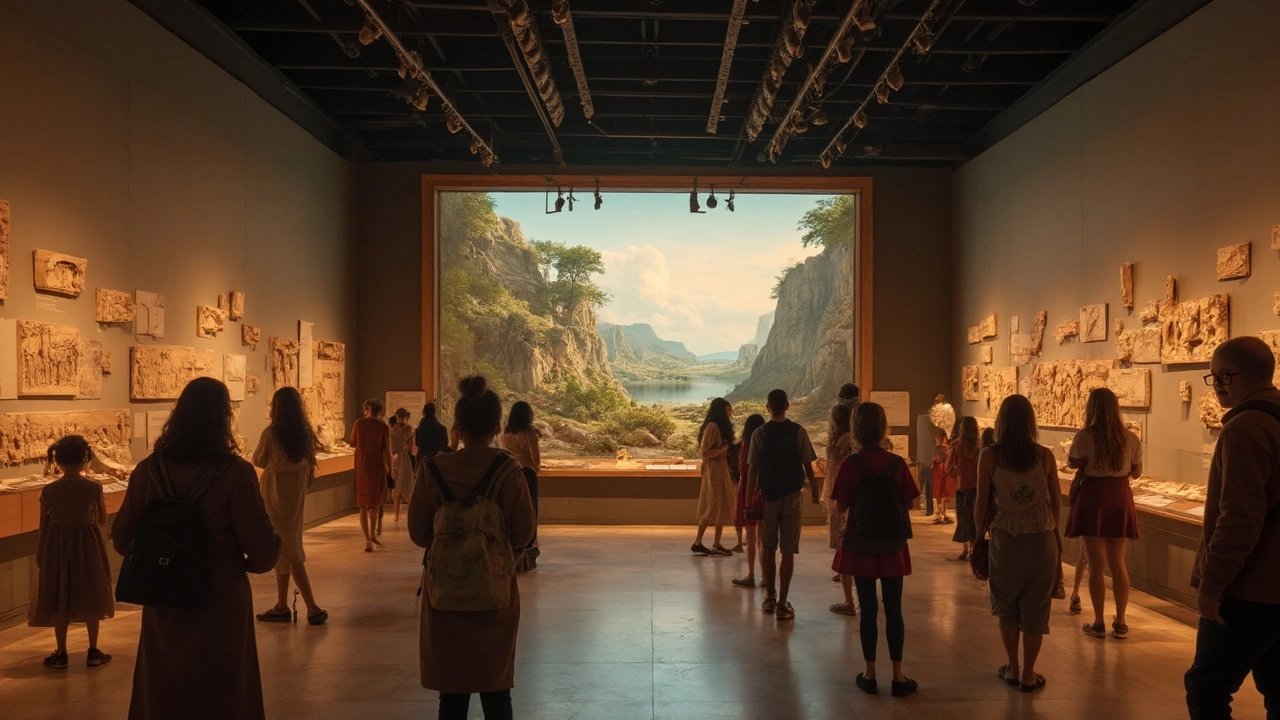
Preservation and Modern Influence
Keeping something so old in good shape isn't easy, but archaeologists and art historians have been on it since this ancient art was uncovered. The painting found at Catal Huyuk had to deal with thousands of years' worth of wear and tear, so experts had to be super careful with it. They used techniques like digital documentation to ensure that even if the original piece fades, its details won't be lost forever.
There’s an undeniable influence this oldest landscape painting has on how we view art today. Modern artists study its methods, appreciating the simplicity and raw emotion that carry through the ages. It's like saying even the barest landscape scrawl can hold layers of meaning.
In fact, the admiration for ancient art is echoed by many in the art community. As art historian John Berger once said,
"To understand a landscape is to respond to it at an existential level."His words remind us that what we see in the oldest landscapes is not just a snapshot of the past but a window into how people related to their environment.
Art schools and museums around the world take cues from these ancient creations. Some institutions have incorporated techniques from these pieces into their teaching curriculums and art restoration methods.
While this painting might not hang in the Louvre, its impact on later art movements is felt in gallery walls and classrooms globally. It's a bit like a really good playlist—its influence just keeps echoing through time, helping artists and art lovers connect with their roots and explore the beauty around them.
